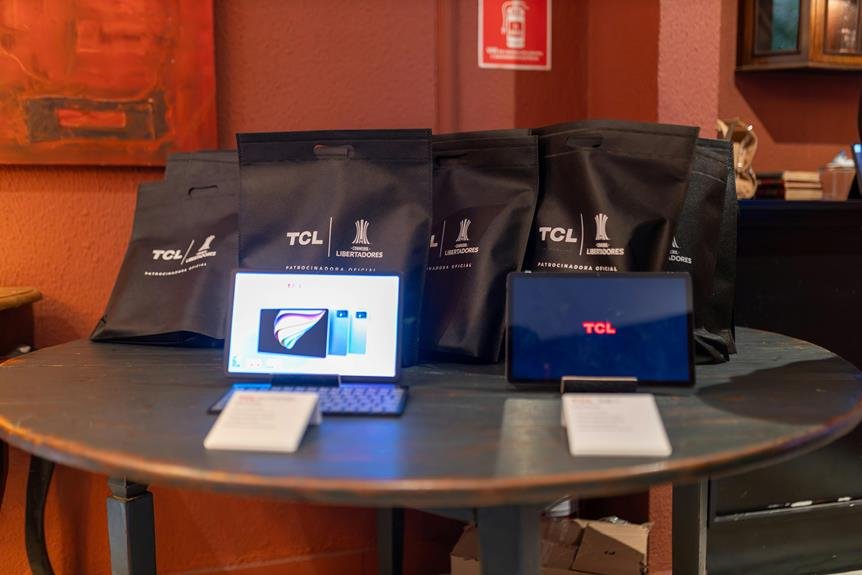Consistent branding across digital channels is crucial for your business. It enhances brand recognition and builds trust with your audience. When your visual identity—like colors and logos—remains uniform, people remember you more easily. This unity creates a cohesive experience, fostering emotional connections that drive customer loyalty. Additionally, a consistent brand voice guarantees that your messaging resonates with the right audience. It streamlines your marketing efforts, making them more effective. Ultimately, consistent branding not only attracts new customers but also retains the ones you have. Stick around to uncover more strategies for achieving branding consistency that can transform your business.
Understanding Brand Consistency
Brand consistency is essential for any business aiming to create a recognizable identity across digital channels. When you establish a strong, consistent brand, you shape brand perception in your audience's minds. This perception plays a critical role in building customer loyalty, as people tend to stick with brands they trust and recognize. Consistency across all platforms enhances audience engagement, creating a seamless experience that resonates with your customers.
Messaging cohesion is fundamental in reinforcing your brand's identity. When your messaging aligns across different channels, it fosters an emotional connection with your audience, making them feel more connected to your brand. This emotional bond can greatly influence brand equity, as customers are often willing to pay more for brands they feel connected to.
Moreover, maintaining brand consistency helps improve your market positioning. By clearly defining your brand's unique value, you achieve competitive differentiation that sets you apart from similar businesses in your industry. Ultimately, understanding brand consistency isn't just about logos and colors; it's about creating a holistic experience that resonates with your audience and builds lasting relationships.
Benefits of Unified Branding
Unified branding offers significant advantages that can really boost your business. When your brand is consistent across all digital channels, you'll see increased recognition, enhanced trust, and streamlined marketing efforts. These benefits not only make your brand more memorable but also strengthen your connection with customers.
Increased Brand Recognition
A consistent approach to branding across digital channels can greatly boost your brand recognition. When you maintain a unified brand image, it enhances brand recall and creates strong visual cues that your audience will easily remember. This consistency fosters an emotional connection, leading to better audience engagement.
Here's how different aspects contribute to increased brand recognition:
| Aspect | Description | Benefit |
|---|---|---|
| Visual Cues | Logos, colors, and fonts | Instantly recognizable |
| Storytelling Techniques | Engaging narratives about your brand | Builds emotional connections |
| Cross Channel Presence | Active on social media, websites, etc. | Greater reach and visibility |
Using storytelling techniques allows you to differentiate your brand in the market, making it stand out from competitors. When your audience sees consistent branding, it not only enhances their perception management but also boosts brand loyalty. By creating a cohesive message across platforms, you're ensuring your brand resonates with consumers, ultimately strengthening their emotional ties to your business. Remember, a well-recognized brand is more likely to attract new customers and retain existing ones. So, invest in unified branding to reap these benefits!
Enhanced Trust and Credibility
Consistent branding across all digital platforms can greatly enhance your trust and credibility with consumers. When you maintain a unified brand image, it signals reliability, which fosters customer loyalty. This loyalty stems from a positive brand perception, where consumers feel connected to your values and mission. Authenticity messaging plays a key role here; by being genuine in your interactions, you create an emotional connection that resonates with your audience.
Additionally, effective reputation management relies on clear, consistent communication. Trust signals, such as transparency initiatives and community engagement, reinforce your brand's credibility. If you're open about your practices and values, customers are more likely to view your brand favorably.
Moreover, a well-thought-out user experience enhances this trust further. When customers navigate your digital platforms effortlessly and find cohesive brand storytelling, it builds confidence in your offerings. They see that you care about their journey, which strengthens their relationship with your brand. Ultimately, consistent branding isn't just about visuals; it's about creating a trustworthy experience that encourages long-term relationships with your audience. This commitment to authenticity and clarity can set you apart in a crowded digital landscape.
Streamlined Marketing Efforts
Streamlined marketing efforts can greatly boost your brand's efficiency and impact. When you unify your branding across digital channels, you enhance marketing integration, which helps you connect more effectively with your target audience. A consistent brand voice strengthens your content strategy, making your messaging clearer and more memorable. This alignment fosters a cohesive digital presence that resonates with your audience.
Moreover, cross-channel promotion becomes easier when your branding is consistent. You can tell compelling brand stories that engage your audience, no matter where they encounter your content. As you create a seamless customer experience, you increase audience engagement, encouraging them to interact with your brand across various platforms.
Building Trust With Customers
To build trust with your customers, you need to guarantee your visual identity is consistent across all digital channels. When your branding looks the same everywhere, it creates a sense of reliability that customers appreciate. Additionally, aligning your messaging reinforces that trust, making it clear that you stand by your values and promises.
Visual Identity Consistency
A strong visual identity is vital for building trust with your customers. When your brand uses consistent visual elements, it creates a sense of familiarity. Start by establishing clear color palettes that reflect your brand voice and emotional resonance. Consistent typography choices guarantee that your message is easily readable and recognizable across all platforms.
Logo variations should also be thoughtfully designed, allowing for adaptability without losing your brand's essence. Imagery styles play an important role in visual storytelling; they should align with your overall design guidelines to maintain aesthetic coherence.
To help maintain this consistency, create a thorough brand guide that outlines these visual elements. This guide should cover everything from logo usage to preferred color schemes, assuring that anyone creating content for your brand can do so cohesively.
As you implement these strategies, remember that your visual identity is more than just design; it's a reflection of your brand's personality and values. When customers see consistent visuals, they're more likely to feel a connection, fostering trust and loyalty over time.
Messaging Alignment
Visual identity isn't just about design; it sets the stage for how your brand communicates its values and messages. Your messaging alignment plays a significant role in building trust with customers. When you guarantee messaging coherence and tone uniformity, it creates communication clarity that resonates with your audience. By targeting the right audience and maintaining narrative consistency, you strengthen your value proposition and establish a recognizable brand voice.
To effectively manage your messaging, consider employing a content strategy that emphasizes emotional connection and message adaptability. Here's a simple framework to guide your approach:
| Key Element | Description |
|---|---|
| Messaging Coherence | All communications should reflect your core message. |
| Tone Uniformity | Maintain a consistent tone across platforms. |
| Audience Targeting | Tailor your messages to meet audience needs. |
Enhancing Brand Recognition
How can you make your brand unforgettable in a crowded digital landscape? Enhancing brand recognition is essential for standing out and fostering brand loyalty. To achieve this, focus on building a strong digital presence that resonates with your audience. Consistent use of visual cues, like logos and colors, helps improve brand recall, making it easier for consumers to remember you.
Here are some strategies to enhance brand recognition:
- Tell Your Story: Use brand storytelling to create an emotional connection with your audience. Share your journey, values, and mission to make your brand relatable.
- Engage Your Audience: Foster audience engagement through interactive content, such as polls, quizzes, or live sessions, to strengthen consumer perception and loyalty.
- Evolve Your Identity: Be open to identity evolution. As consumer preferences change, adapting your brand while maintaining core elements can provide a competitive advantage.
Key Elements of Branding
Building a memorable brand goes beyond recognition; it involves understanding the key elements that make up your brand identity. Start with your brand personality, which reflects your values and how you want to be perceived. This personality helps create an emotional connection with your target audience, making them feel more engaged with your brand.
Next, consider brand storytelling. This is how you communicate your journey, mission, and vision, creating a narrative that resonates with customers. Your logo design should be simple yet memorable, acting as a visual representation of your brand. Coupled with effective color psychology, you can evoke specific emotions that align with your brand message.
Don't overlook your brand voice, which shapes how you communicate with your audience across all platforms. A consistent voice builds trust and familiarity. Additionally, focus on customer experience; every interaction should reflect your brand values, enhancing satisfaction and loyalty.
Challenges of Inconsistent Branding
Inconsistent branding can lead to significant challenges for businesses, affecting everything from customer perception to overall credibility. When your messaging doesn't align across various channels, it creates confusion among your audience. This disparity can damage your brand's reputation and hinder audience engagement.
Here are a few challenges you might face:
- Visual mismatch: Different logos, colors, or fonts across platforms can dilute brand recognition.
- Messaging disparity: Inconsistent messages can confuse customers and lead to distrust.
- Stakeholder alignment: Without clear branding guidelines, it's tough to get everyone on the same page.
As you conduct a competitive analysis, you may notice how other brands excel at maintaining a cohesive image. This consistency strengthens their brand storytelling and enhances brand perception. On the flip side, when your branding lacks cohesion, customers might struggle to connect with your story. They may hesitate to engage, fearing mixed signals about your values and quality. To overcome these hurdles, focus on platform adaptation while adhering to established branding guidelines. By doing so, you can create a unified presence that resonates with your audience, fostering trust and loyalty.
Strategies for Consistent Branding
To achieve consistent branding across digital channels, it is crucial to establish clear guidelines that everyone in your organization can follow. Start with defining your color palette and typography guidelines, ensuring they're applied uniformly across all platforms. This creates a cohesive look that enhances brand recognition.
Next, outline logo usage rules to maintain visual consistency. Make sure your brand voice and tone consistency resonate in every piece of content, from social media posts to website articles. Audience targeting should be carefully considered, aligning your messaging with the needs and interests of your specific demographic.
Implement a content strategy that incorporates cross-channel integration, ensuring that all digital touchpoints reflect your brand identity. Regularly gather customer feedback to refine your approach, and conduct competitive analysis to stay ahead in your market.
Utilize visual storytelling to forge an emotional connection with your audience, making your brand memorable. By aligning your social media efforts with your overall branding strategy, you'll strengthen your presence and nurture lasting relationships with your customers. With these strategies in place, you'll set the stage for effective and consistent branding across all digital channels.
Measuring Branding Success
Measuring branding success is vital for understanding how well your efforts resonate with your audience. By tracking specific brand metrics, you can gain valuable insights into customer perception and engagement levels. To effectively measure your branding success, consider these key aspects:
- Brand surveys: Collect direct feedback from your audience about their feelings toward your brand.
- Social listening: Monitor online conversations to understand how customers discuss your brand in real-time.
- ROI assessment: Evaluate the return on investment from your branding initiatives to determine their effectiveness.
Using performance indicators like brand loyalty and market analysis helps you understand how your brand stands against competitors. Additionally, audience feedback is important; it provides a direct line to what your customers value most. By combining these elements, you can form a thorough view of your branding efforts. This way, you'll not only identify areas for improvement but also celebrate your successes. Ultimately, measuring branding success allows you to adapt and refine your strategies, ensuring your brand remains relevant and impactful across digital channels.
Case Studies of Effective Branding
Now, let's explore some successful brand examples that showcase effective branding across digital channels. You'll see how these brands maintain visual identity consistency, making them easily recognizable no matter where you encounter them. By analyzing these case studies, you can gain valuable insights to enhance your own branding strategies.
Successful Brand Examples
How do successful brands maintain consistency across digital channels? They harness the power of brand evolution and storytelling techniques to forge emotional connections with their audience. By focusing on customer engagement and cross-channel synergy, these brands create a cohesive experience across all digital touchpoints.
Consider these successful examples:
- Nike: Their strong social media presence and visual storytelling inspire brand loyalty, encouraging customers to share their own stories.
- Coca-Cola: With consistent messaging that resonates emotionally, they effectively use audience targeting to build a community around their brand.
- Apple: Through sleek designs and a clear narrative, Apple maintains a unified image that transcends digital platforms, making every interaction feel intentional.
These brands exemplify how to maintain a consistent voice and image across channels. By leveraging emotional connections and focusing on customer engagement, they guarantee every digital touchpoint reinforces their brand identity. This approach not only strengthens brand loyalty but also cultivates a loyal following that feels part of the brand story. So, when you think about your own brand, remember the importance of consistency—it's key to building lasting relationships with your audience.
Visual Identity Consistency
Successful brands don't just tell a story—they also present a visual identity that's instantly recognizable across all platforms. Visual identity consistency is key in creating a memorable experience for your audience. When you think of effective branding, consider how visual elements, like brand colors and typography choices, play a vital role.
Here's a quick breakdown of essential components for maintaining visual identity:
| Element | Importance | Examples |
|---|---|---|
| Brand Colors | Evoke emotions and associations | Blue for trust, red for excitement |
| Typography Choices | Communicate tone and personality | Serif for tradition, sans-serif for modern |
| Logo Variations | Adapt for different uses | Stacked, horizontal, icon-only |
Design guidelines help guarantee aesthetic coherence by establishing rules for visual hierarchy, imagery style, and iconography usage. Using consistent brand patterns solidifies your identity.
Future Trends in Branding
As we move into the future, branding is set to evolve in ways that prioritize authenticity and personalization. With emerging technologies transforming the marketing landscape, you'll need to stay ahead of trends that reflect changing consumer behavior. Brands that embrace these shifts will capture attention and foster loyalty.
Here are some future trends in branding you should keep an eye on:
- Hyper-Personalization: Tailoring experiences to individual preferences will become the norm, making consumers feel valued.
- Sustainability and Ethics: Brands that prioritize eco-friendly practices will resonate with socially conscious consumers, enhancing trust.
- Augmented Reality (AR): Using AR in marketing will create immersive experiences, allowing consumers to interact with your brand in innovative ways.
Conclusion
To summarize, consistent branding across digital channels isn't just a preference; it's essential for your business's success. You might worry that maintaining uniformity limits creativity, but it actually enhances your message's clarity and impact. Think of it like a puzzle—each piece must fit perfectly to create a cohesive image. By focusing on unified branding, you build trust, recognition, and ultimately, loyalty among your customers. Embrace this approach, and watch your brand thrive in today's competitive landscape.





Leave a Reply